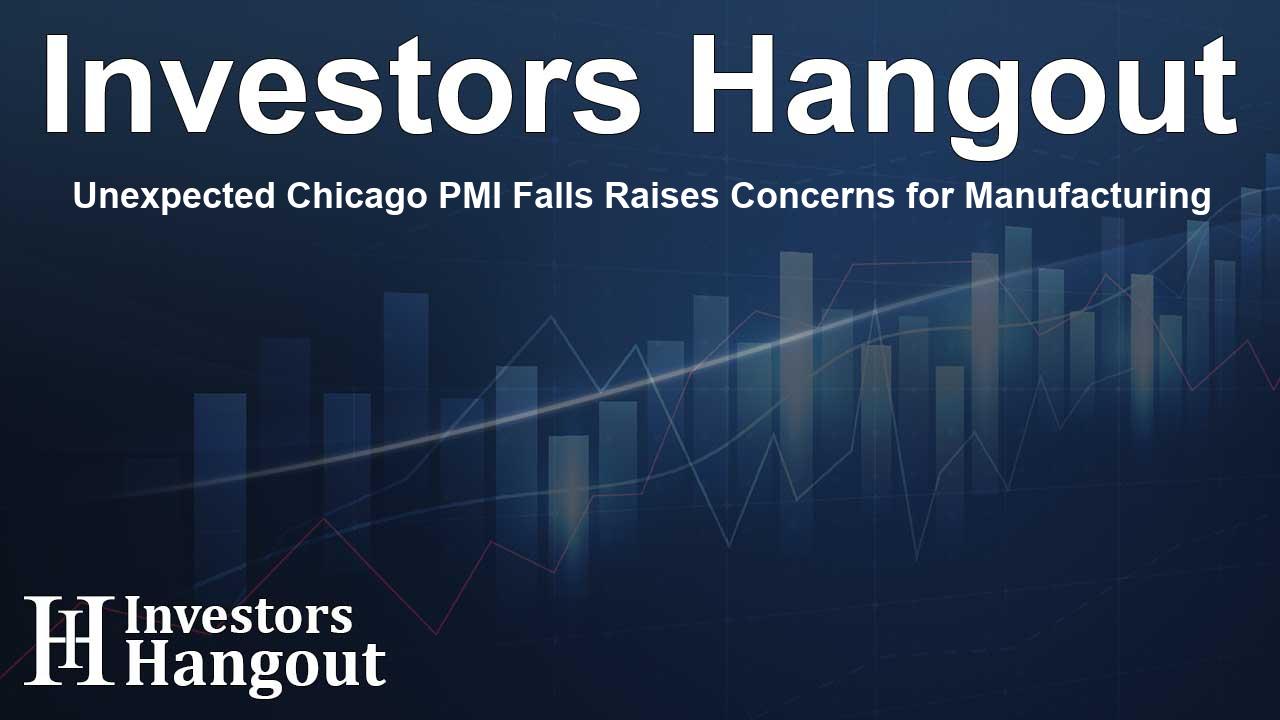Unexpected Chicago PMI Falls Raises Concerns for Manufacturing

Understanding the Recent Chicago PMI Decline
Recently, the Chicago Purchasing Managers' Index (PMI) reported a surprising score of 36.9, highlighting ongoing challenges in the manufacturing sector within the region. This score is a clear indication that the manufacturing landscape in Chicago is experiencing significant contraction, a worrisome sign for the local and national economy.
Comparing Current Scores to Expectations
The PMI score of 36.9 notably falls short of the forecasted 42.7, revealing a much deeper contraction than many had predicted. Investors often interpret such a low reading as bearish, suggesting potential weaknesses for the USD and overall economic stability.
The Implications of a Lower PMI
When we place the current score alongside the previous figure of 40.2, it becomes evident that the manufacturing sector is still struggling. This continued decline may stem from ongoing market volatility, diminished demand, or other external economic factors that affect these businesses.
Significance of the Chicago PMI
The Chicago PMI serves as a vital gauge for understanding the manufacturing environment. A score above 50 signals growth, whereas a score below indicates contraction; thus, the current reading of 36.9 clearly reflects a period of decline.
Forecasting Future Indicators
Additionally, the Chicago PMI can offer insights into future performance indicators like the ISM manufacturing PMI. Given the weaker than anticipated Chicago PMI, it is reasonable to predict that the upcoming ISM manufacturing PMI may also reflect contractions.
Market Reactions and Economic Outlook
The unexpected dip in the PMI creates a ripple effect on market sentiment. Investors tend to monitor economic indicators closely for signs of recovery or further decline. The current difficulties in manufacturing are likely to influence their outlook on the USD and can lead to a more cautious approach in investment strategies.
As the economic landscape evolves, market participants will be particularly focused on forthcoming data that might suggest a turnaround or continued hardships for the manufacturing sector and the broader economy.
Frequently Asked Questions
What does a Chicago PMI score of 36.9 indicate?
A score of 36.9 indicates a contraction in the manufacturing sector, suggesting challenges faced by manufacturers in the Chicago region.
How does the Chicago PMI affect the USD?
Lower PMI scores often indicate economic weakness, which can lead to a bearish outlook for the USD as investor confidence wanes.
What was the previous Chicago PMI score?
The previous score was 40.2, indicating a decline from that level to the current 36.9 score.
How can the Chicago PMI influence future economic indicators?
The Chicago PMI can provide clues regarding future trends in manufacturing, including forecasts for the ISM manufacturing PMI.
Why is the Chicago PMI considered important?
It offers insights into the manufacturing sector's health, serving as a key indicator for economic performance in that area.
About The Author
Contact Henry Turner privately here. Or send an email with ATTN: Henry Turner as the subject to contact@investorshangout.com.
About Investors Hangout
Investors Hangout is a leading online stock forum for financial discussion and learning, offering a wide range of free tools and resources. It draws in traders of all levels, who exchange market knowledge, investigate trading tactics, and keep an eye on industry developments in real time. Featuring financial articles, stock message boards, quotes, charts, company profiles, and live news updates. Through cooperative learning and a wealth of informational resources, it helps users from novices creating their first portfolios to experts honing their techniques. Join Investors Hangout today: https://investorshangout.com/
The content of this article is based on factual, publicly available information and does not represent legal, financial, or investment advice. Investors Hangout does not offer financial advice, and the author is not a licensed financial advisor. Consult a qualified advisor before making any financial or investment decisions based on this article. This article should not be considered advice to purchase, sell, or hold any securities or other investments. If any of the material provided here is inaccurate, please contact us for corrections.
